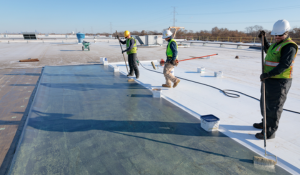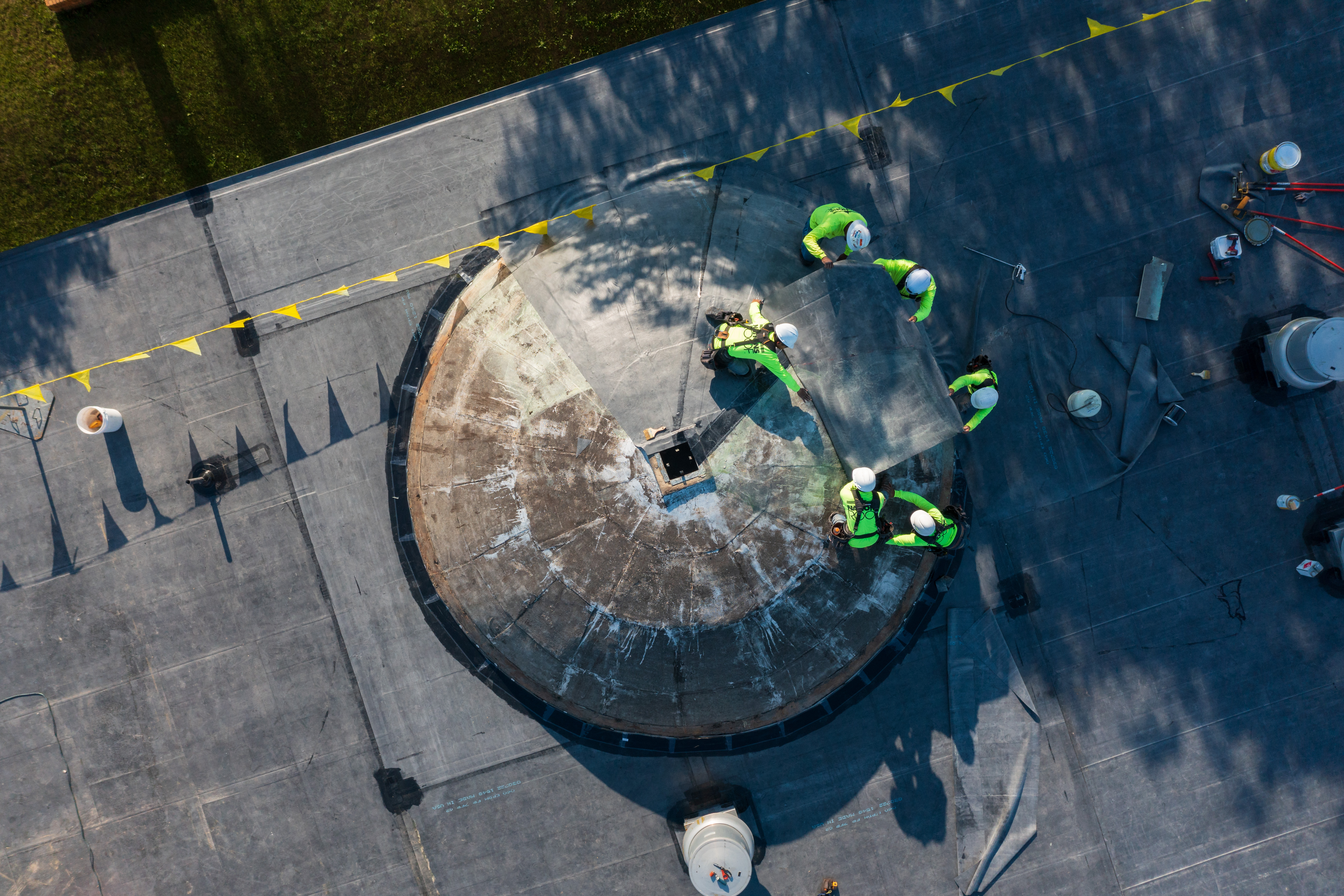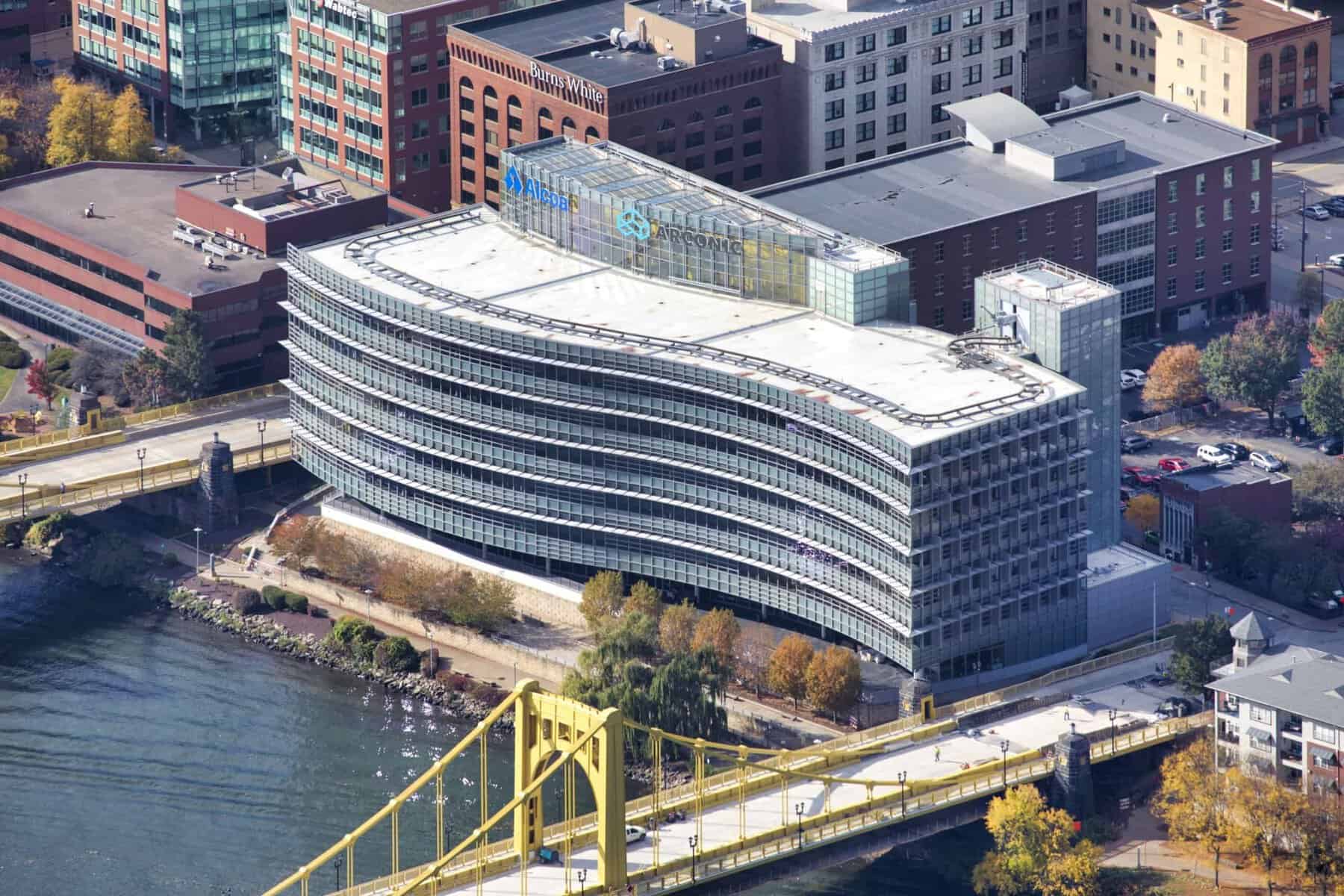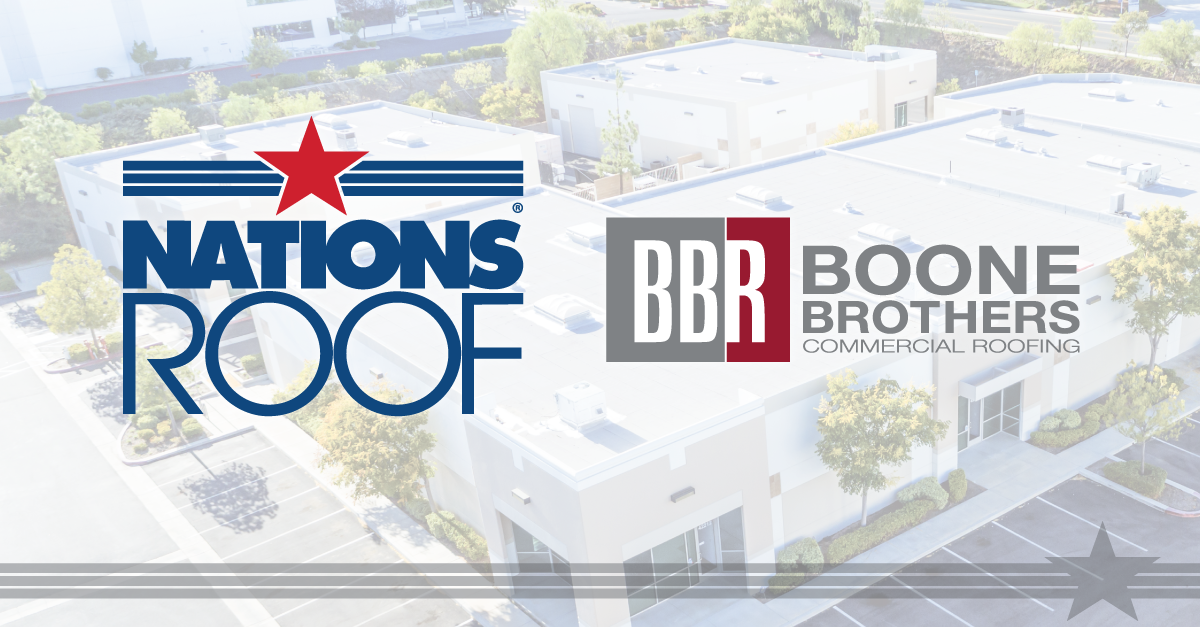Roof Restoration vs. Reroofing vs. Replacement
By Nations Roof on Nov 7, 2025 12:07:29 PM

Restoration, Reroofing, or Replacement:
A Practical Framework for Facility Decision-Makers
When a commercial roof starts to age, leak, or show surface wear, you have three main paths forward: restore it, reroof it, or replace it.
Each solution can extend the life of your roof, but they differ in cost, process, warranty, and long-term results. Understanding those differences helps property owners and facility managers make informed, cost-effective decisions, balancing short-term repairs with long-term protection.
At Nations Roof, we help you evaluate all three options to identify the best fit for your building’s condition, budget, and operational goals.
Understanding the Three Options
1. Roof Restoration
 Roof restoration focuses on revitalizing the existing roof surface rather than removing or covering it. The process often includes cleaning, repairing localized damage, sealing seams, and potentially applying a liquid-applied coating (such as silicone, acrylic, or urethane) depending on roof type and manufacturer approval.
Roof restoration focuses on revitalizing the existing roof surface rather than removing or covering it. The process often includes cleaning, repairing localized damage, sealing seams, and potentially applying a liquid-applied coating (such as silicone, acrylic, or urethane) depending on roof type and manufacturer approval.
These coatings form a seamless, waterproof barrier that enhances reflectivity, improves energy efficiency, and extends service life , all without removing the existing roof. In other cases, restoration may involve reinforcing flashing, adding new surfacing layers, or addressing ponding issues on BUR and modified systems.
Best for: Roofs that are watertight with isolated issues, like minor cracking, seam separation, or ponding.
What to Expect:
-
The existing surface is power-washed and inspected.
-
Minor defects and flashing issues are repaired.
-
A coating is applied across the full roof area, forming a continuous seal.
Lifespan: 5–15 years, depending on the coating type and roof condition.
Why It Works: Restoration is an ideal choice for facilities looking to extend roof life while managing capital budgets. It reduces waste, adds reflectivity to cut energy costs, and avoids disruption to building operations.
2. Reroofing (Roof Overlay)
 Reroofing, sometimes called an overlay, involves installing a new membrane layer directly over your existing system without a full tear-off. This creates a new waterproof surface and often includes the addition of new insulation with a higher R-value (a measurement of how well a roof's insulation resists the flow of heat), improving thermal performance and potentially lowering energy costs.
Reroofing, sometimes called an overlay, involves installing a new membrane layer directly over your existing system without a full tear-off. This creates a new waterproof surface and often includes the addition of new insulation with a higher R-value (a measurement of how well a roof's insulation resists the flow of heat), improving thermal performance and potentially lowering energy costs.
This approach strengthens your roof assembly while avoiding the cost and downtime of a full tear-off. However, it’s only permitted when the deck is structurally sound and there is no more than one existing roof layer. The International Building Code (IBC) and most manufacturers prohibit the installation of a third roof layer.
Best for: Roofs in fair condition with one existing layer and no hidden moisture or structural damage.
What to Expect:
-
The existing roof is inspected and tested for moisture.
-
Damaged areas are repaired before installation.
-
A new single-ply membrane, such as TPO, PVC, EPDM, or modified bitumen, is mechanically fastened or adhered in place.
Lifespan: 10–20 years or occasionally longer, depending on system type and conditions.
Why It Works: Reroofing strikes a balance between short-term affordability and long-term value. It gives you a new roof surface, often with improved insulation and energy efficiency, while minimizing downtime and material waste.
3. Roof Replacement
 Roof replacement is the complete removal of the existing system down to the deck, followed by installation of a new roof assembly, including new insulation, vapor barriers, and membrane.
Roof replacement is the complete removal of the existing system down to the deck, followed by installation of a new roof assembly, including new insulation, vapor barriers, and membrane.
It’s the most comprehensive and permanent solution, restoring full performance, warranty eligibility, and system integrity. Replacement allows you to address structural issues, upgrade materials, and install modern, high-performance systems that improve energy management and reduce long-term costs.
Best for: Roofs that have reached the end of their service life, contain trapped moisture, or no longer meet warranty or safety requirements.
What to Expect:
-
The existing roof is fully removed to the deck.
-
Damaged decking is repaired or replaced.
-
A new roof system is installed to current codes and manufacturer standards.
Lifespan: 20–30+ years, depending on system type and maintenance program.
Why It Works: While replacement has the highest upfront cost, it offers the best long-term ROI. You gain a full manufacturer warranty, improved insulation, and the assurance of starting fresh with a system that’s code-compliant and built for decades of performance.
Side-by-Side Comparison
How to Choose the Right Option
The right decision depends on your roof’s condition, budget, and operational priorities.
Roof Restoration is ideal if your roof is mostly watertight and you want to extend its life at the lowest cost.
Reroofing is best when you need a longer-term fix but can’t justify a full tear-off.
Replacement is the only choice when damage or age has compromised performance or compliance.
Ask these questions before deciding:
-
How many roof layers are currently in place?
-
Has moisture penetrated insulation or decking?
-
What warranty coverage do I need?
-
What level of disruption can our operations tolerate?
-
Are we focused on short-term savings or long-term ROI?
At Nations Roof, we provide detailed inspections, photos, moisture scans, and lifecycle cost comparisons, giving you all the data to make an informed choice.
FAQs About Restoration, Reroofing, and Replacement
No. Restoration only works if the roof is watertight and structurally sound. Saturation or trapped moisture requires reroofing or replacement.
Building codes typically allow only two roof layers. After that, a full replacement is required.
Restoration produces the least waste and adds reflective energy performance. Reroofing reuses existing materials, while replacement offers efficiency upgrades but more debris.
Replacement offers the longest life (20–30+ years), followed by reroofing (10–20 years) and restoration (5–15 years).
Schedule an inspection. Our certified teams document every condition and provide side-by-side comparisons with warranty guidance and budget analysis.
The Nations Roof Difference
At Nations Roof, we don’t push one option over another, we help you find the right one for your building, budget, and goals.
Our Proven Advantage:
-
1,100+ self-performing roofing professionals across the U.S.
-
Certified by all major manufacturers for warranty-compliant work
-
24/7/365 National Service Center for rapid response
-
Dedicated account managers for consistent service and communication
-
Industry-leading 0.47 EMR and award-winning safety culture
Whether you need to buy time with repairs or a coating, strengthen your system with a reroof, or start fresh with a new installation, Nations Roof delivers National Coverage. Local Service. Trusted Results.™.
Next Step: Request a Roof Evaluation
Compare your roof restoration, reroofing, and replacement options with a certified Nations Roof inspection.
Request an Inspection today to plan your next step with confidence.
You May Also Like
These Related Stories

Roof Restoration vs. Roof Replacement: What’s Right for Your Facility?

Built-Up Roof vs. TPO: Pros, Cons & Key Differences



